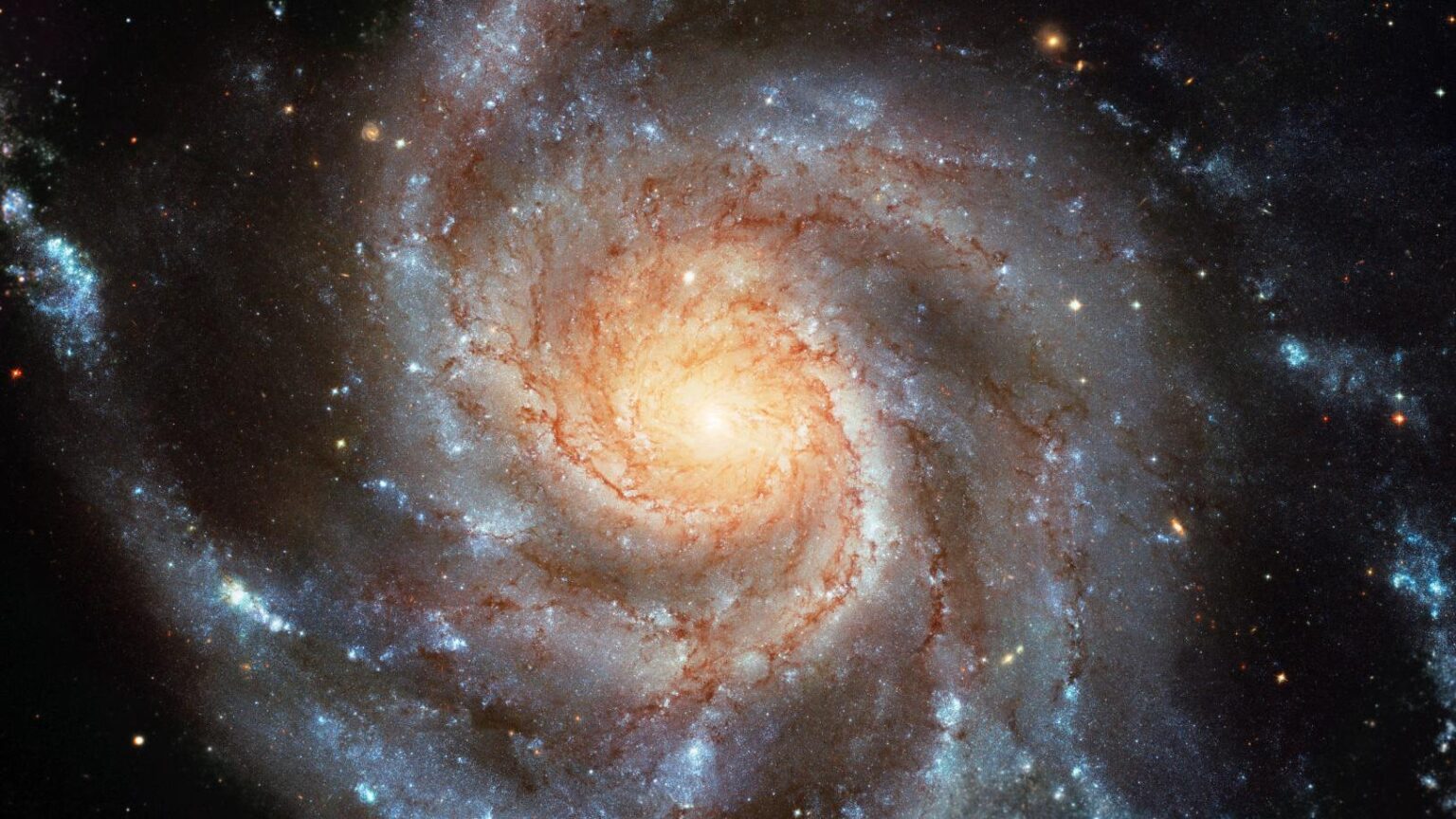As a part of the study of Prana, it is important to know how manifestation happened and how the senses, the mind, the intellect, the ego, the principles of creation of the work organs (Karmendriyas) and Prana, evolved. The whole story of creation was visualized by Kapila Maharshi in his philosophy called Sankhya. The term ‘Sankhya’ means numbering. It is called Sankhya because it enumerates the basic principles involved in the process of manifestation.
With utmost gratitude and respect to Kapila, let us have a look at the theory of Sankhya.
What was there before the beginning? There will certainly be no concrete answer to this question as it is beyond human comprehension. At the same time, one may think there could have been nothing before the beginning. Nothingness could only mean stillness! Stillness is silence. We could call this primordial silence “creative emptiness”. Everything can certainly evolve from it as it is creative. In other words, everything was present in this creative silence but in an un-manifested way.
According to Kapila, the creative silence started to manifest as various qualities. The first quality which manifested was Satwa. Satwa means pure.This quality is clarity, light and knowledge. From Satwa evolved a new quality of passion and activity. Kapila called this new quality Rajas,which means being dynamic or active. From Rajas came yet another quality, which Kapila named Tamas. Tamas is described by the terms condensation, stagnancy, lethargy, sleep, darkness and ignorance.
These three qualities together are called “Trigunas” by Kapila. This is the base of creation according to Sankhya.
From “Gunas”- qualities evolved the elements. Ether was the first element to evolve; followed by Air. From Air evolved Fire; from Fire evolved Water and from Water Earth evolved.
The creative emptiness which was there before the beginning was omnipresent as it was the only reality. At some point, something began to manifest in the creative emptiness and that is what we call creation. The creative emptiness was both knowledge and knowing. Knowing is the process whereby one obtains knowledge and that can only happen through awareness. It is believed that both knowledge and awareness existed within the creative emptiness, but it was not manifested or differentiated. It was ONE.
Let me create a model of creation for explaining the process of manifestation. In this model of ‘the story of creation’, awareness, which had till then never been separate from consciousness, experienced “seeing” itself, the inherent tendency of awareness is to see and know. The moment it felt like seeing itself, it was able to see itself. It was not difficult as there was nothing else in the universe. At that very moment, awareness experienced itself as a separate entity for the first time.
As soon as it started to feel itself as a separate entity, there came the celebration of joy. This feeling was experienced everywhere, as the universe was not fragmented at the time.
When it felt itself as a separate entity the idea of space arose; the first possibility of duality. Time being an associated dimension of space started to move against the stillness. Thus, Space and Time evolved in awareness. As soon as it felt the joy, awareness understood that it missed something as it realized that it was not full and complete anymore – it was only a part and not full. So there grew a strong desire to become whole and complete as it was before.
While it made the leap to establish oneness with consciousness, awareness felt as if it was caught in between the spokes of Time and Space! So, followed by the joy, was felt the pain upon realizing that it was separate from consciousness.
To establish oneness with consciousness, awareness leapt. But it could not achieve oneness with consciousness, as the idea of Time and Space had already evolved in awareness. While it made the leap to establish oneness with consciousness, awareness felt as if it was caught in between the spokes of Time and Space! So, followed by the joy, was felt the pain upon realizing that it was separate from consciousness.
Awareness started to move in a different direction as movement and direction had already evolved. Once again it took a leap still wanting to establish oneness with consciousness. It kept jumping but always in vain. In the process, something slowly started to form within it in the most subtle way. This desire of awareness was the cause of creation.
Sankhya identifies the first evolved principles as knowledge and light which are Satwaqualities. The very moment when awareness felt the desire to see itself, knowledge and light that were there in the consciousness in an unmanifest form started to manifest. This is what Kapila conceived as the Satwa quality. From Satwa there continued the desire in awareness to reunite with consciousness and as a result, movement or activity evolved which was theRajasic quality. From Rajasic quality something started to form on a more concrete level and this tangible state has been described by Kapila as Tamas. These three qualities were the basis of creation, says Sankhya.
As already stated, elements evolved from these qualities. First came Ether, the space. Then came movement and expansion, or Air. Then there was friction caused by the movement which gave rise to heat or the third element, Fire. From fire, elements got mixed up in a loose manner and the liquid state was generated which was the element Water. It condensed to a solid state forming the final element Earth. Everything we see in the world is composed of these three qualities and five elements, according to Sankhya. All the philosophies subsequently developed in India were based on these ideas. Let us now examine whether there is any rational basis for this theory.
Atoms are packed with energy; so is this tress of hair even though it appears to be dead matter. We don’t see the high velocity movements of the sub atomic particles of matter that happen continuously and cause its manifestation.
This is a strand of hair. (The Master shows a lock of hair) What is it made of ? It is composed of innumerable small particles called atoms. Atoms are the finer particles of matter. Although this strand of hair appears to be thread-like, it is composed of innumerable atoms. Atoms are packed with energy; so is this tress of hair even though it appears to be dead matter. We don’t see the high velocity movements of the sub atomic particles of matter that happen continuously and cause its manifestation.
Where does the movement happen? If there is a movement, there needs to be space for movement. This space serves as the medium for the movement. As there is movement, there should be an intelligence which makes the movement possible. This intelligence knows how to move in well-designed orbits and holds protons and neutrons together as inseparable entities of material existence. There are perhaps more aspects yet to be discovered by science. However, present-day knowledge has enabled us to believe that great intelligence functions in the atoms that constitute this lock of hair. This piece of knowledge forms part of Satwa quality, says Kapila. Sankhya considers light as a form of energy that coexists with knowledge. Both light and knowledge underlie the manifestation of this strand of hair. If you would recall, light and knowledge were identified as Satwa qualities by Kapila.
In addition to the passion or motivation to move, there exists the actual movement within the atoms that constitute this tress of hair, which forms the Rajasic quality embedded in it. As a result of the functions mentioned above, this appears as matter. While it appears as matter, the nature of this hair is inert and lethargic, which means its movement is not seen by the human eye. This state of “non-movement” present in the hair is the Tamasic quality. Everything that we see in objective reality also contains these three qualities.
The Sankhya says, in the ultimate analysis there exist only three qualities and five elements that underlie all material manifestations. Our body is also composed of atoms. At the subatomic level the body has a high frequency movement which is all happening in a space. This space is the witness of the movement. The background is considered to be space with respect to the movement but, in reality, it is silence. The silence which is the basis of everything in turn is the witness, the Purusha.
Take any material and heat it up. The water in it will come out as vapor and it turns into a liquid. It then turns red hot as Fire; and if you heat it further, it will become gas or the Air element. If you heat it furthermore under even higher pressure, the atomic structure will be touched liberating the subatomic particles, thus expanding the space within them, which is the Ether element. From this we can understand that everything in the manifest world has five elements within itself -the solid state, the liquid state, the state of brilliance and heat, the gaseous state and finally the space. So, Sankhya has been right in considering the three qualities and five elements as the basis of creation.




